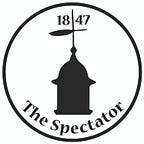Looking back at Hamilton’s decision to go need-blind on its 10th anniversary
by Elise Wilson ’22, Contributing Writer
This year marks the 10th anniversary of Hamilton becoming need-blind in admissions decisions. The Class of 2014 was the first class to go through the College under this policy.
Prior to 2007, Hamilton used $5,000-$10,000 merit scholarships to incentivise enrollment for top students. At the time, the College was officially “need-aware” but not “need-blind,” factoring student need into enrollment decisions. As Vice President for Enrollment Management, Monica Inzer proposed new ways to make Hamilton more available to students with financial need, including eliminating merit scholarships. That year, the Board of Trustees voted in favor of the change and accounted for this development in student financial aid policy in the College’s budget.
Still, Hamilton remained only “need-aware.”
“At a certain point in our process, we’d be overspent in financial aid with our offers of admission, and before we released decisions, we’d pull out students with high financial need,” said Inzer.
As a result, Hamilton hired an econometric modeling analyst to study the budget and determine whether going need-blind could be economically sound. Results were positive, and shortly after, former College President Joan Hinde Stewart and senior staff proposed the switch to need-blind to the Trustees.
“Our goal was to have the financial aid to admit the most talented students,” Inzer said of the vision, adding that this policy “reflects our values as a college and the values of our namesake.”
The Trustees supported the proposal enthusiastically; six pledged $500,000 each at the meeting to discuss the change to need-blind admissions. Over the next year-and-a-half, the College raised $40 million to support the new policy.
Beyond its promise of meeting 100 percent of demonstrated need, Hamilton is currently one of five of eleven NESCAC schools to claim need-blind status for domestic first-year applicants. This list also includes Bowdoin, Middlebury, Williams, and Amherst.
Some students say the financial incentive implicit in Hamilton’s need-blind status was a motivating factor for choosing the College.
“Hamilton opened up so many opportunities for me as an individual who comes from a low-income family,” Daniella Metti ’23 said.
“Financial aid was a big factor for me for choosing Hamilton. It was cheaper for me to go to Hamilton than to go in-state,” said Rachel Lu ’22. “I have spoken to many other students on financial aid, but I think economic diversity is not always visible at Hamilton.”
According to the official Hamilton website, however, the policy does not extend to transfer or international students. It states, “Due to the limited resources available for international students, the Admission Committee cannot be need-blind when evaluating applications from [them].”
Need-blind admission for international students remains a venture few schools have large enough endowments to afford. Forbes says that only five US schools — Harvard, Yale, Princeton, MIT, and Amherst — are need-blind for international students.
“I build the financial aid budget, and I have only have a few little levers on the edge to pull, so if we are way over in financial aid, we might not have financial aid left over for transfer students or international students,” Inzer said. However, she noted that since becoming need-blind, the College has spent more on transfer applicants than before the policy was implemented, and it now spends ten percent of the financial aid budget on the non-domestic student population, who make up five percent of the student body.
Inzer called becoming need-blind a “gamechanger” and noted that since becoming need-blind, Hamilton receives “more applicants, more students of color, higher quality students, more geographic diversity, increased alumni pride, an improved reputation, and a higher retention rate.”
Additionally, the number of students eligible for Pell Grants, a subsidy from the federal government limited to students with “exceptional financial need,” is at a record-high for this year’s class of 2023 at 21 percent. Although high-need students now receive more financial aid than before the policy change, the number of students receiving aid has remained about the same at roughly 50 percent each year.
Inzer, citing the Hamilton programs aimed at increasing diversity — Questbridge, Posse, the Hamilton College Opportunity Program (HEOP), and partner programs Say Yes to Education, YES Prep Public Schools, Chicago Scholars, and diversity overnights — noted that “an initiative I care a lot about is not just getting students in our applicant pool, or admitting them, but making sure they have access to an equal experience once they arrive.”
Some students have claimed that the College relies on programs like Questbridge, Posse, and HEOP to promote diversity. In response to these critiques, Inzer says that Hamilton does much more and that these programs are only the most visible.
